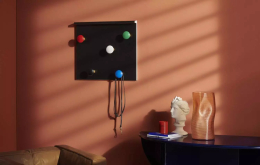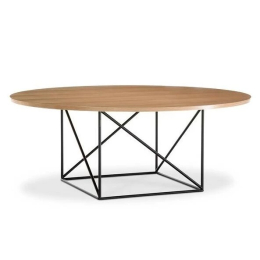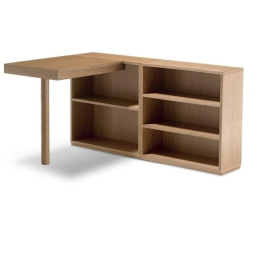Preferences
Le Corbusier by Cassina
3 resultsCollection: Le Corbusier
Brand: Cassina
Specifications:
This coat-rack was originally created by Le Corbusier for the Cabanon, a summer-house on the Cote d’Azur that he designed in 1951 as a birthday present for Yvonne, his wife. This re-issue by Cassina is based on the 1957 version, which had been made for the Unités de Camping, which was next to the Cabanon. In line with the bright colours used for these minimal spaces, keyed on the compact comfort offered by a cruise-ship cabin, the coat-rack too was multi- hued. The base is made of oak, while the hooks are mushroom-shaped, and are placed at varying heights, based on the criteria established in the Modulor.
Collection: Le Corbusier
Brand: Cassina
Specifications:
Organic and yet rational, this table was designed by Le Corbusier in 1958. Its distinctive construction derives from two geometric figures: the circle, in the form of a sturdy oak table-top, sitting on a cube-like base, composed of steel tubes at right angles to each other. This clean-cut dynamic style confers on the future a piece of great value, aesthetically speaking, that makes a perfect partner in the home, or as a conference table, seating up to ten․
Collection: Le Corbusier
Brand: Cassina
Specifications:
This small wooden writing desk was designed for the children’s rooms of the Unité d’Habitation in Nantes-Rezé, a comune in the Loire Atlantique département. Le Corbusier’s interest in promoting the harmonious arrangement of people’s individual and collective lives led him to explore spaces and furniture in-depth, with constant reference to the measurements of the human body calculated using his Modulor system. The LC16 Table de travail consists of a shelving unit and a work-surface, both of them in matte natural-stain oak. The piece can be extended by adding fixed shelves to the table feature.
Born Charles-Édouard Jeanneret, Le Corbusier (6 October 1887 – 27 August 1965) is widely acclaimed as the most influential architect of the 20th century. From private villas to mass social housing projects, his radical ideas, designs, and writings presented a whole-scale reinvention not only of individual structures but of entire concepts of modern living. He was born in Switzerland and became a French citizen in 1930. His career spanned five decades, and he designed buildings in Europe, Japan, India, and North and South America. Like his contemporaries, Frank Lloyd Wright and Mies van der Rohe, Le Corbusier lacked formal architectural training. He was attracted to the visual arts; at age fifteen, he entered the municipal art school in La-Chaux-de-Fonds, which taught the applied arts connected with watchmaking. Three years later, he attended the higher course of decoration, founded by the painter Charles L’Eplattenier, who had studied in Budapest and Paris. Le Corbusier wrote later that L’Eplattenier had made him “a man of the woods” and taught him painting from nature.




